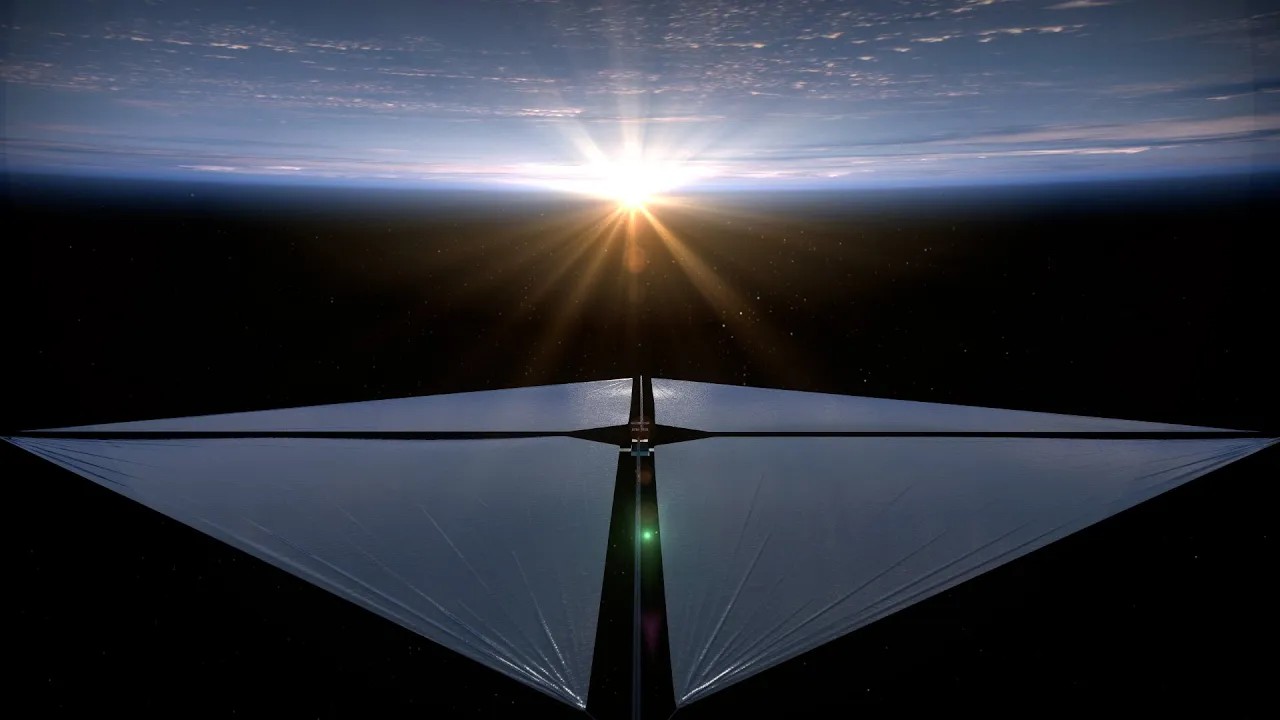NASA's next-generation solar sail technology is ready for launch

Sailing in space may seem like something out of science fiction, but the concept is no longer limited to books or the big screen. In April, the next generation of solar sail technology, known as the Advanced Composite Solar Sail System, will launch aboard Rocket Lab's Electron rocket from Launch Complex 1 in Mahia, New Zealand. This technology could facilitate future space travel and expand our understanding of the Sun and solar system.
Solar sails use the pressure of sunlight to propel themselves by changing their angle relative to the Sun so that photons bounce off the reflective sail and push the spacecraft. This makes it possible to abandon heavy propulsion systems, increase the duration and reduce the cost of flights. Despite the reduction in mass, solar sails were limited by the material and structure of the masts, which act similar to the masts of a sailboat. But NASA is going to change the concept of space sailing ships of the future.
NASA's advanced composite solar sail system is designed to aid future space travel and expand our understanding of the Sun and solar system.
NASA's new lightweight sailboat
The Advanced Composite Solar Sail System demonstration project uses a twelve-unit CubeSat (12U) built by NanoAvionics to test a new flexible polymer-carbon fiber composite mast that is stiffer and lighter than previous mast designs. The main goal of the mission is to successfully demonstrate the deployment of the new mast, but once deployed, the team also hopes to prove the effectiveness of the sail.
Like a sailboat that turns to catch the wind, a solar sail can adjust its orbit by tilting the sail. After assessing the mast deployment, the mission will test a series of maneuvers to change the spacecraft's orbit and collect data for future missions with even larger sails.
“Masts are typically either heavy and metal or lightweight composite and bulky – neither of which are suitable for today's small spacecraft. Solar sails require very large, stable and lightweight masts that can fold compactly.” says Keats Wilkie, the mission's principal investigator at NASA's Langley Research Center in Hampton, Virginia. “The sail masts are tubular in shape and can be compressed and rolled like a tape measure into a small package, while still having all the benefits of composite materials, such as less flex and warping with temperature changes.”

After entering a sun-synchronous orbit, located at an altitude of about 1000 kilometers above the Earth, the spacecraft will begin to deploy composite masts running along the diagonals of the polymer sail. In about 25 minutes, the solar sail will be fully deployed, covering an area of about 80 square meters—about the size of six parking spaces. Cameras mounted on the spacecraft will record this important moment, monitoring the shape and symmetry of the sail as it unfurls.
The large sail will make the spacecraft visible from Earth if lighting conditions are right. Once fully deployed and properly oriented, the sail's reflective material will be as bright as Sirius, the brightest star in the night sky.
“The seven meters of deployable masts can collapse into a shape that fits in your hand,” says Alan Rhodes, lead mission systems engineer at NASA Ames Research Center in California's Silicon Valley. “We hope that the new technologies tested on this spacecraft will inspire others to use them in areas we haven't even thought about.”

Creating solar sails of the future
As part of NASA's Small Spacecraft Technologies program, the successful deployment and operation of lightweight composite solar sail masts will prove its capabilities and pave the way for larger missions to the Moon, Mars and other planets.
This mast design could potentially support future solar sails up to 500 square meters in area, roughly the size of a basketball court, and the technology resulting from a successful mission could support sails up to 2,000 square meters in area – roughly half the size of a football field.
“The sun will continue to burn for billions of years, so we have a limitless source of driving force. Instead of launching massive fuel tanks for future missions, we can launch larger sails that use the fuel we already have,” Rhodes says. “We will demonstrate a system that uses this rich resource to take the next giant steps in exploration and science.”
Because sails harness energy from the Sun, they can provide constant thrust to support missions that require unique vantage points, such as those seeking to understand our Sun and its influence on Earth. Solar sails have long been a preferred option for missions that could carry early warning systems to monitor solar weather. Solar storms and coronal mass ejections can cause significant damage to Earth, overloading power grids, disrupting radio communications and affecting aircraft and spacecraft.
Composite masts may have future applications beyond solar sails: their lightweight design and compact packaging system could make them an ideal material for building habitats on the Moon and Mars, as frame structures for buildings, or as compact antenna poles to create communications relays for astronauts. exploring the lunar surface.
“This technology is exciting to rethink the whole idea of space sails and apply it to space travel,” said Rudy Aquilina, solar sail project manager at NASA Ames. “Demonstrating the capabilities of solar sails and lightweight composite masts is the next step in using this technology to inspire future missions.”



